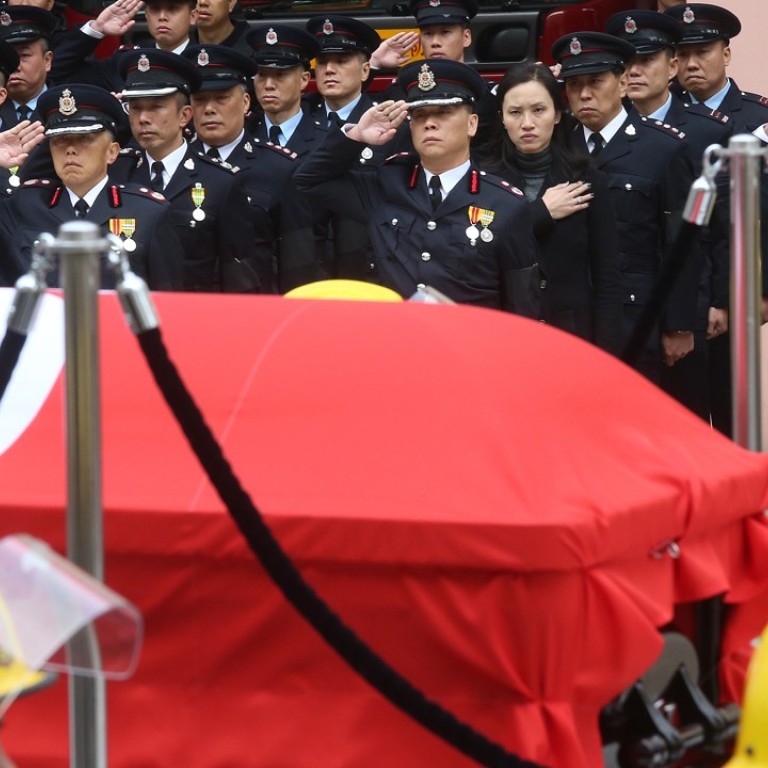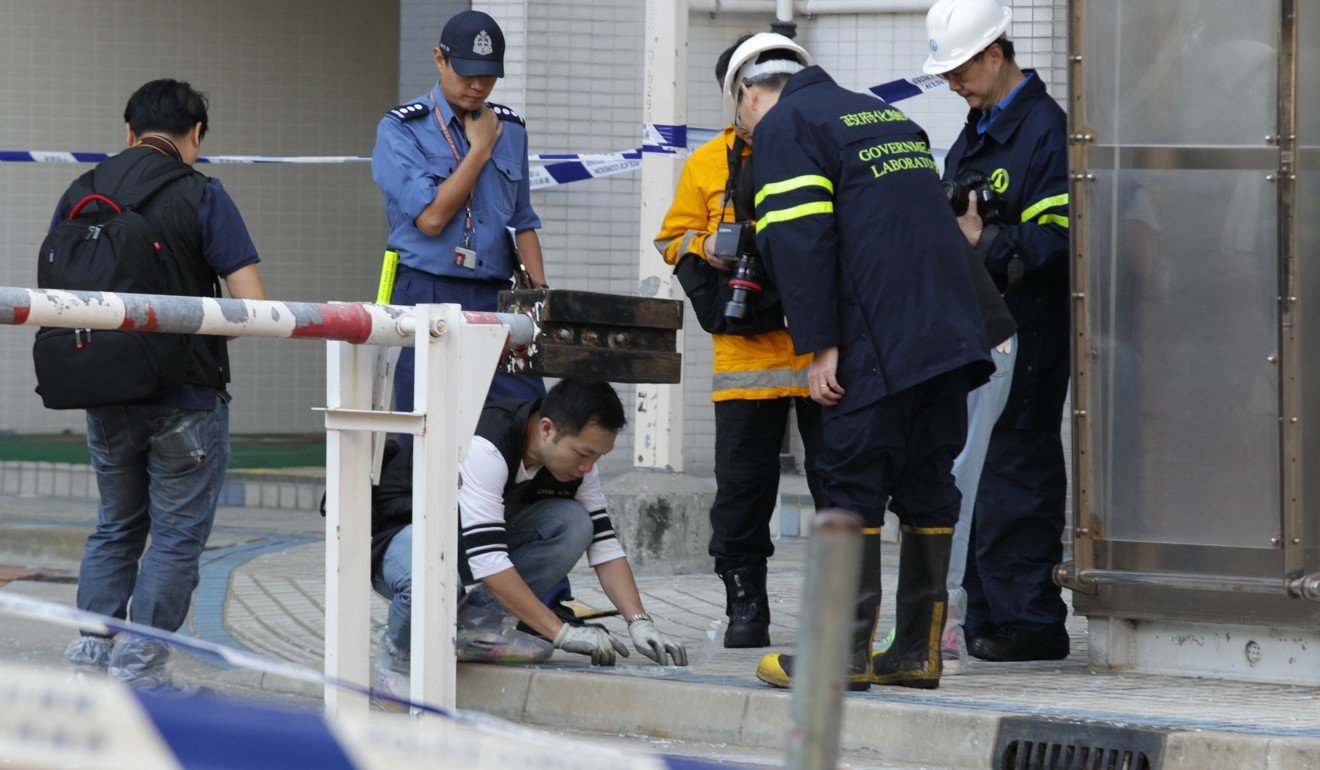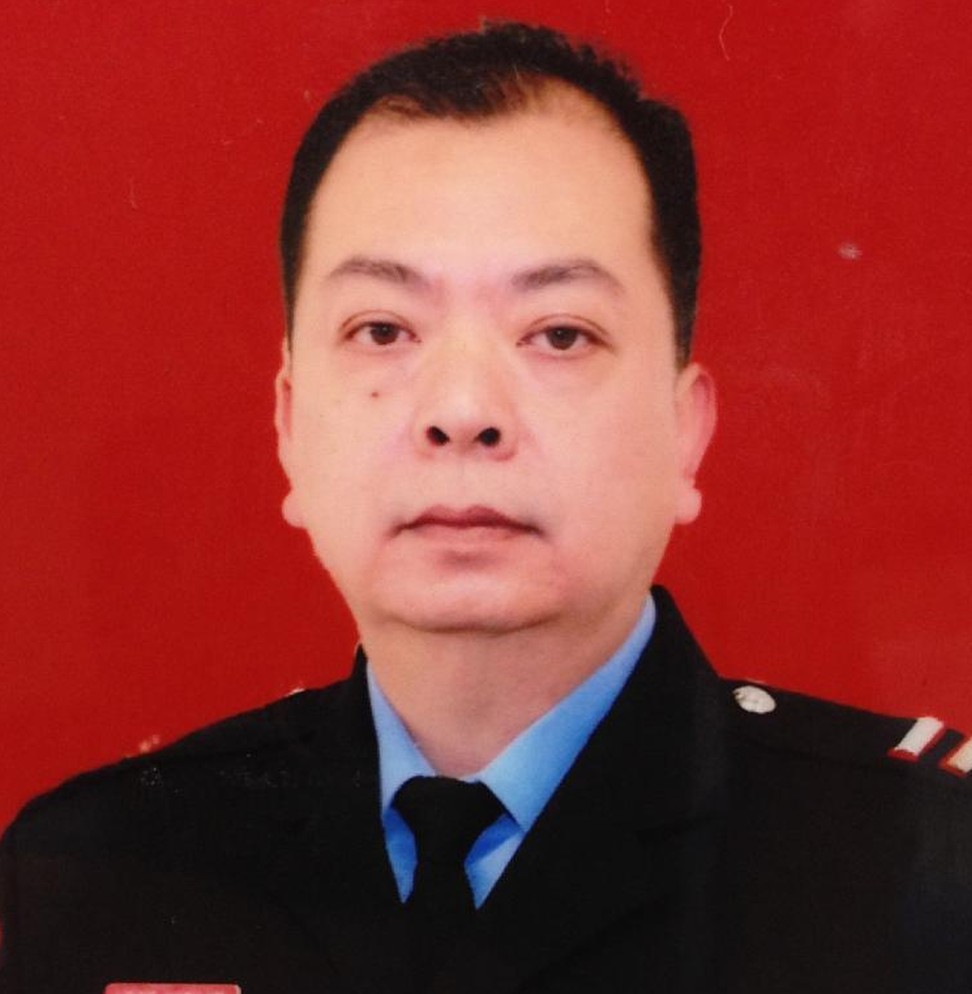
Hong Kong fire services guidelines and gear targeted in inquest over death of fireman from 2014 gas explosion
Coroner’s Court considers evidence submitted over deadly blast that killed firefighter Leung Kwok-kei, in bid to suggest improvements and prevent similar tragedies
When an explosive blast strong enough to break an elevator door hit Hong Kong fireman Leung Kwok-kei, it melted his helmet and inflicted horrific injuries. He died 13 days later in what was initially described as a simple case of gas leakage.
But on Wednesday, the Coroner’s Court finished hearing evidence submitted by various parties, in which experts called the incident “extremely rare”. The court has been tasked to look into the cause of Leung’s death and identify recommendations to prevent a repeat of the tragedy.
The case raised questions over emergency procedures in handling gas leakages and the adequacy of the Fire Services Department’s gear and guidelines.
Hong Kong says farewell to fireman killed in Shek Kip Mei gas blast
Among issues identified were outdated helmets worn by firefighters during the incident at Mei Ying House in Shek Kip Mei Estate on November 22, 2014. Nine crew members were sent to hospital, and among them, principal fireman Leung, who eventually succumbed after almost two weeks of intensive care.
The court previously heard the gas leakage first came to the attention of the building’s management when a resident made a report at 8.20am. Her call was the first of four reports that prompted security guard Lui Ching-kuen to inspect the corridors from the ninth to the eleventh floor in the three hours that followed.

Lui said he smelled something unusual, but could not tell what it was. His colleague Pun Chiu-keung testified: “He asked me to go check because his nose wasn’t very sharp ... I smelled gas.”
The first team of firefighters led by senior station officer Tong Yui-cheung arrived at 11.47am, within four minutes of Lui’s police report, followed by a light rescue unit led by Leung, who was covering for a colleague.
‘It was like thunder’: residents describe Hong Kong gas blast
They quickly identified the source of the leakage in flat 1110 and forced their way in. But just as Tong turned to receive arriving paramedics, an explosion from inside the flat spewed a massive fire plume across the ceiling and into the corridor.
Taking the brunt of the blast was Leung, who was thrown from the flat entrance against a corridor wall.
“Brother, brother!” acting senior fireman Leung Pak-shing recalled shouting as he rushed to help his fallen colleague.
[Leung] stood closest to danger out of a responsibility to supervise the two firefighters working inside the flat
Leung Kwok-kei died 13 days later on December 4 at the age of 49, with second-degree burns, inhalation injuries, multiple rib and skull fractures, and complications that included pneumonia.
He is survived by his wife and 17-year-old daughter, after 29 years of meritorious service with the department.
Commanding officer Tong said he had handled about 100 cases of gas leakages in his 33 years of service, and not one of them resulted in a fire until then.
The trapped gas sparked a smouldering fire in a plastic box placed in a closet. This later grew into naked flames and caused an explosion when firefighters opened the door and disturbed the air movements within the gas-filled flat.

The explosion put all three lifts out of service, damaging one of the doors with a blast pressure of 6.12 bar, while the pressure at the flat entrance was estimated to be 8 bar or higher.
Neighbours shed light on ‘reclusive’ man killed in suspected Kowloon blast suicide
It was further concluded that gas had been leaking close to seven hours before the blast.
During the week-long hearing, estate security guard Lui and senior fireman Liu Yuen-man both testified they had not been trained to identify dangerous gases by smell.
“It’s common sense acquired from experience,” Liu explained.
Testimonies from firefighters also revealed they did not wear anti-flash hoods in accordance with guidelines, or check gas concentration readings before Leung ordered the forced entry and allowed his subordinates to enter the flat without breathing apparatuses.
But it was their helmets – made in accordance with 1989 British standards – that were named “the most dangerous” by the coroner, after it emerged that three firefighters, including Leung, had their protective head gear blown off during the operation. All helmets were replaced in February 2015.
Department assistant director Kong Ping-lam also concluded the flat entrance was the most vulnerable position at the scene.
“[Leung] stood closest to danger out of a responsibility to supervise the two firefighters working inside the flat,” he said. “Because of his position during the unexpected explosion ... Leung was thrown in the air.”
Coroner Wong Wai-kuen will deliver his ruling next Wednesday.


